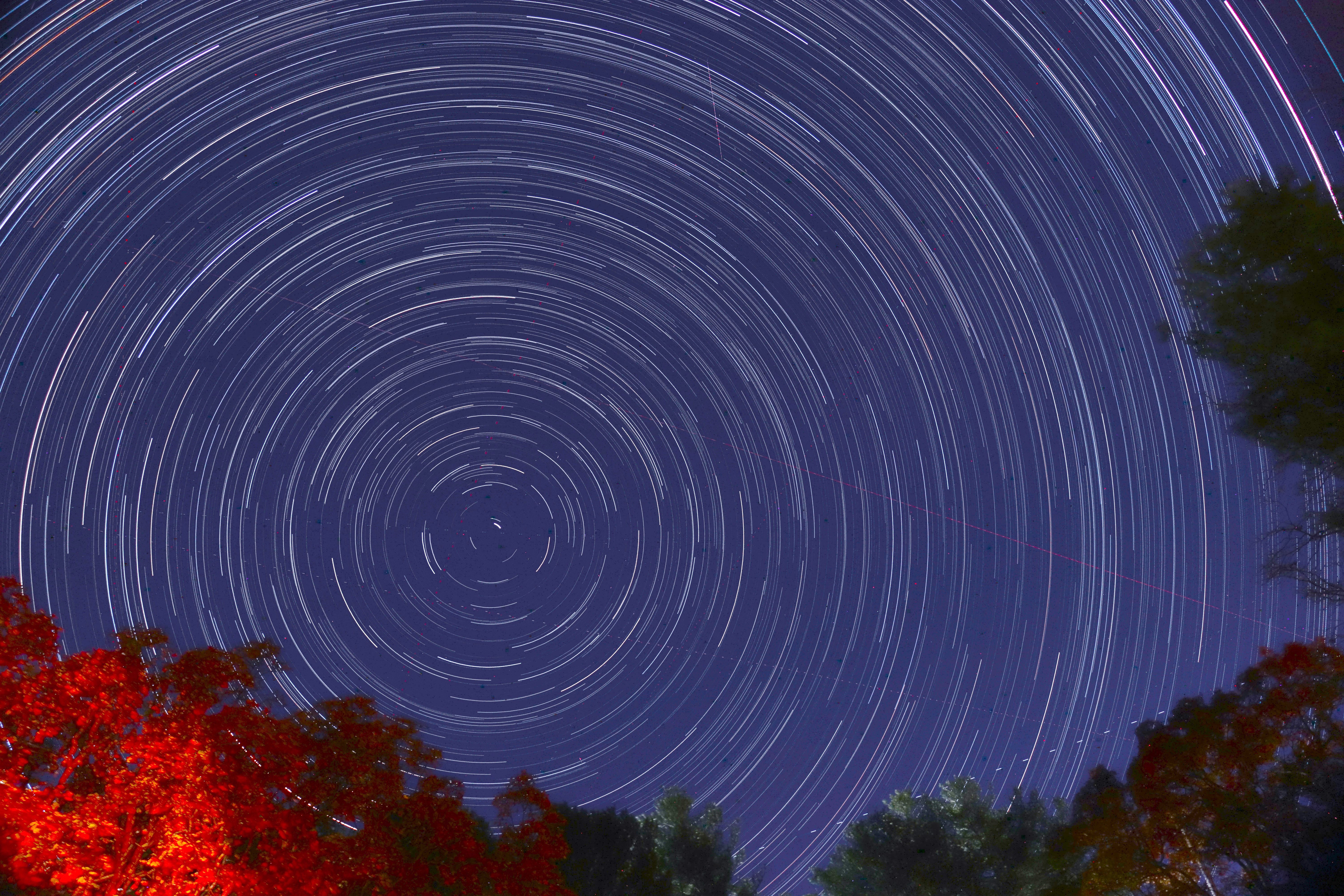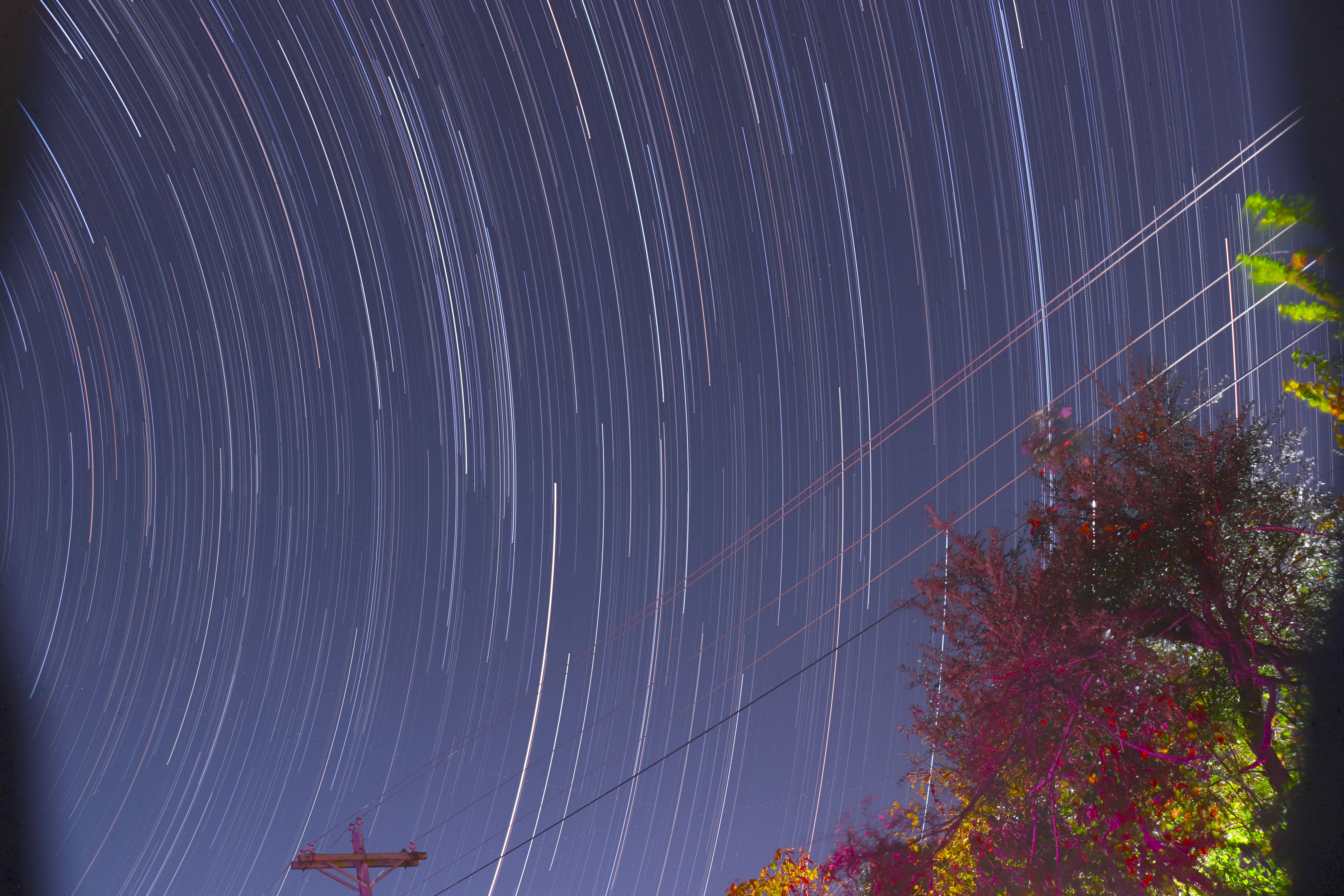Star trail images aim to catch the movement of stars across the night sky through the use of photos with long exposure times. From our perspective, stars appear to slowly move across the night sky from east to west because of the rotation of the Earth in the same way that our star, the sun, appears to move across the sky from east to west during the day. Capturing these star trails is relatively easy and can result in very scenic shots.
Setting a camera (usually a DSLR) on a tripod, you take a continuous series of images, usually 30 seconds each (which is the max for the average DSLR). While the camera shutter may only be open for 30 seconds, this is enough for all the stars to appear to move slightly. Thus, each 30 second image captures a short section of each star's path across the sky. These shorter exposures are then added together using special software to produce what is effectively a single image showing the stars' trails over a few hours. (Note: Foreground objects do not produce trails as they are not moving relative to the camera.)
Because such image sequences are simple to take, we simply set the camera going to take repeated exposures, and then came back an hour or two later to retrieve it.
Click on the thumbnails below to see larger versions of the final images that were created from our different nights of imaging. (Individual attributions refer only to post-processing.)

Pointing at the North Celestial Pole
(Emma Krebs)

Trails in the north-eastern sky
(Austin Niec)

Southern sky trails through the trees
(Emily Vaughn)
© Copyright © 2024.Tennessee Tech all rights reserved